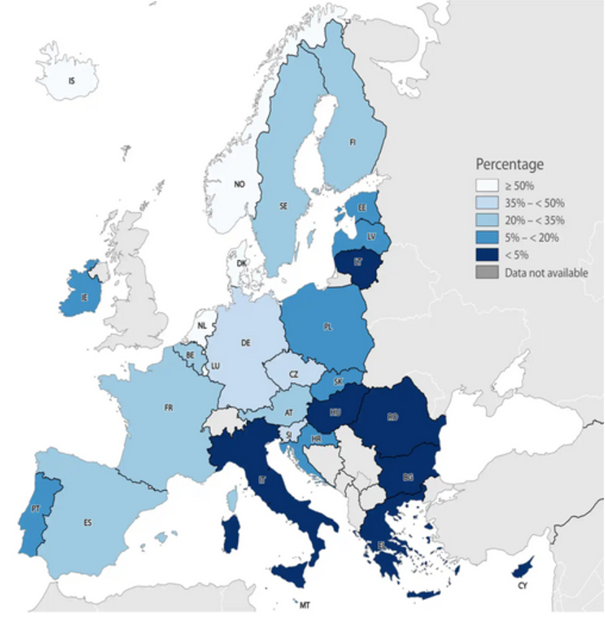Although they do not all face the same challenges when it comes to climate change, European countries are all struggling to adapt. One of the many challenges is the rise of climate hazards, and the pressure it puts of the different insurance systems. Due to increasing exposure to climate risk, the sector is starting to show weaknesses, and incapacity to cover certain aspects of those large issues, which calls for a reaction. Could it happen at a European scale?
Insurance and climate change: a challenge for all Europe
Climate change has a direct impact on the frequency and strength of climate hazards. This evolution constitutes a direct challenge for the insurance sector that must face a rise in covering costs. In response, insurance prices are rising and thus driving the European real estate in a complex situation. The fundamental difficulty being that, especially in regions with high population density, the real estate sector cannot avoid risky territories, as other economic sectors would.
In the Netherlands, which is probably the most exposed European country to submersion and floods, over 25 % of the country’s territory lies under sea level. This represents a challenge for insurance companies which are reluctant to take such risks. In the beginning of 2024, between 1,000 and 2,000 French municipalities were similarly facing high difficulties, being unable to match the rising costs of their insurances.
This threat spreads Europe wide, and yet seems to still be underestimated. Indeed, in a study entitled “It’s getting physical” published in 2023, the Infrastructure and Private Assets Research Institute from EDHEC showed that some investors could see the value of their portfolios see the value of their portfolios fall by more than by more than 50%, due to the rise of climate risks.
A mix of private and public cover
In every European country, one can expect a mix of public and private efforts to compensate for the more and more frequent damages due to climate change. This public effort is necessary given the challenge, yet its balance with private insurance can sometimes be shady.
In many of European countries this balance suffers a lack of clarity, leaving the victims of natural catastrophe often disoriented. In 2021, the floods that struck the Limburg region, caught the protection system off guard. insurance companies received 25,000 damage reports, totaling between 160 and 250 million euros, according to the Dutch Insurance Association. Although the government eventually to intervene, the lack of clarity in the system led to delays, additional costs and significant stress for those affected.
At European scale, an uneven coverage
Given the size of the challenge, and for the sake of visibility on a European scale, the European Insurance and Occupational Pensions Authority (EIOPA) has developed a dashboard, which monitors the coverage of climatic risks by country and by hazard, by tracking historical trends on the one hand, and modeling their current state on the other.
The conclusion we can draw form it is that European countries show a very unequal cover of climate hazards, as shown by the following map.

Figure n°1: Average share of insured economic losses due to weather-related events in Europe (1980 – 2021), source : EEA
This situation must be accounted for, as it may impact deeply the shape and dynamics of the real estate sector at continental scale. The lack of coverage shown by most of the countries in the Southeast of the European Union may constitute a considerable danger, especially since these are already facing deep challenges. in 2010 already, the UNESCO considered that Venice submersion would only be matter of time, giving the rising of sea level, and this tend to be confirmed by latest events.
Although adaptation efforts should not be discouraged, some assets are already vulnerable and exposed to climate change, and thus need desperately an insurance coverage. a new model may be necessary to face a brand-new paradigm. This model could come from a European impulse since some countries show deep advance to this regard. These anticipatory efforts are essential if we are to keep weather risk coverage within the range of possibilities. Otherwise, there is a risk that coverage will contract sharply, leaving the most vulnerable without recourse, as it is already the case.
The Green Building Observatory (OID) has launched a European programme in 2021, the European Sustainable Real Estate Initiative (ESREI), that brings together real estate stakeholders to discuss ESG issues and the situation regarding ESG regulations across Europe.
ESREI is now sponsored by Advenis REIM, AEW, Amundi Asset Management, Axa Investment Managers, BNP Paribas Real Estate, CBRE Global Investors, Ivanhoe Cambridge, La Française REIM, Mazars, Ofi Invest and Pimco Prime Real Estate. Contact the ESREI team at esrei@o-immobilierdurable.fr if you are interested to join us!




